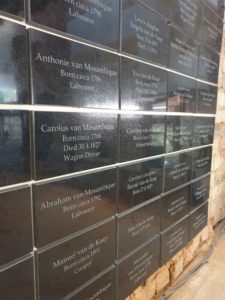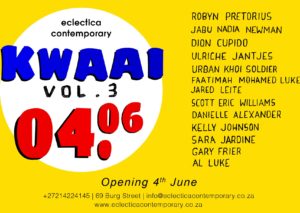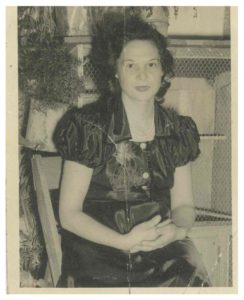In 2013 a human skull was discovered during renovations of the anthropology department at Stellenbosch University. The skull (thought to be that of a woman of mixed ancestry) was found along with two hair and eye colour charts which were used to measure and classify humans in order to justify racism during the 1930s and 1940s. The case of the hair colour chart bears the name of Dr Eugen Fischer, a leading Nazi eugenicist. An identical silver case was found by the university’s Professor Steven Robins at the Max Planck Society Archives in Berlin in the course of his research.
Dr Eugen Fischer, who published his findings in 1921, was one of many German scientists intensely interested in the ‘mixed-race’ people in South-West Africa, the Rehoboth Basters or ‘The Bastards’ as he referred to them. After examining 310 children of Nama women and ‘white’ men, he concluded that they were racially superior to pure Negroes but inferior to pure ‘whites’, but racial mixing was to be avoided. His findings contributed to the prohibition of inter-racial marriage in all German colonies.
Fischer later headed the Kaiser William Institute for Anthropology, Human Heredity and Eugenics, in Berlin and served as one of the scientists on the Gestapo’s Special Commission Number Three which performed forced sterilisation on the ‘Rhineland Bastards’, children born of the union between German women and Senegalese soldiers stationed in the Rhineland after WWI. According to historian, Niall Ferguson, this was the notorious ‘Black Shame’ that produced fresh evidence of the conspiracy to pollute the blood of the Aryan race.
Stellenbosch’s students of cultural anthropology not only used Fischer’s tools of racial classification from 1926 to the mid-1990s, but used a textbook written by Fischer up until the 1960s. The discovery points to the close links between apartheid and Nazism and raises questions as to the history of the use of classification tools at the university. Stellenbosch University (considered the intellectual heart of Afrikanerdom during the apartheid era), is the alma mater of both Hendrik Verwoerd, who as prime minister introduced the first apartheid laws in 1950, and his secretary of state for Native Affairs, Max Eiselen, a cultural anthropology student.
Pseudo-scientific racism has provided the basic justification for slavery since the late 18th century. This pseudo-science asserted that mankind was not a single more or less homogeneous species but was subdivided and ranked from an Aryan ‘master race’ down to a ‘black’ race unworthy of the designation Homo sapiens. Francis Galton’s observations of the Herero and Nama people in South West Africa (Namibia) in the mid-19th century would later inform his thinking about human evolution. His anthropometric work on human heredity laid the foundation for the discipline he christened eugenics. Galton’s theories that Africans were biologically inferior were enthusiastically embraced and justified the claim to Africa by more advanced ‘white’ Europeans. These theories were to have a devastating influence on the people of Germany’s newly-acquired African colony, South-West Africa (Namibia), who would provide the test subjects for this racial science.
In Andre Brink’s post-apartheid novel, The Other Side of Silence, he examines the violence of life in colonial societies such as South West Africa through the eyes of a young German woman. The horror of the violence described in this novel is not only an indictment on colonialism and masculine attitudes in German South West Africa but also for South African society.Not only were the Herero and Nama peoples exterminated in great numbers but the Germans conducted further trials on their bodies in the name of ‘race hygiene’. Autopsies were performed for racial-biological research; sample skulls were scraped clean by female prisoners to be sent to Germany, chillingly described in Brink’s book.
The discovery at Stellenbosch University indicates how the past continues to inform the present in South Africa and how intricately linked colonialism, racism and apartheid are. It provides us with an opportunity to examine our history and a vehicle to understanding how our society may be transformed.
This is an extract from my article published in the African Independent March-April 2018



